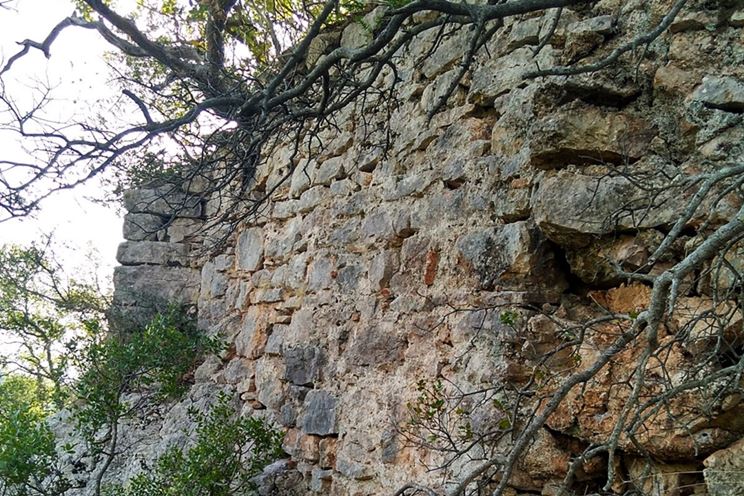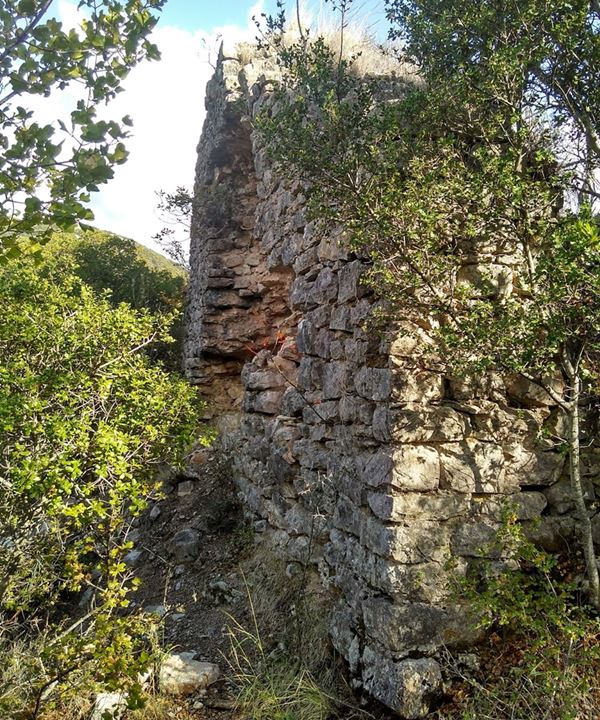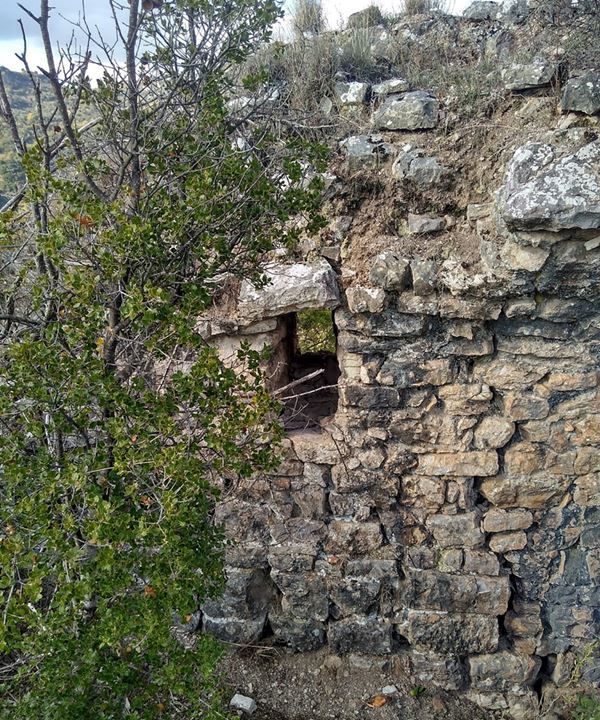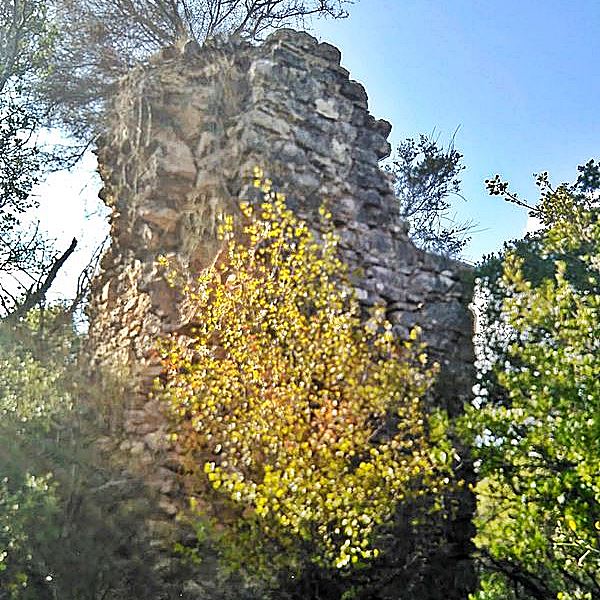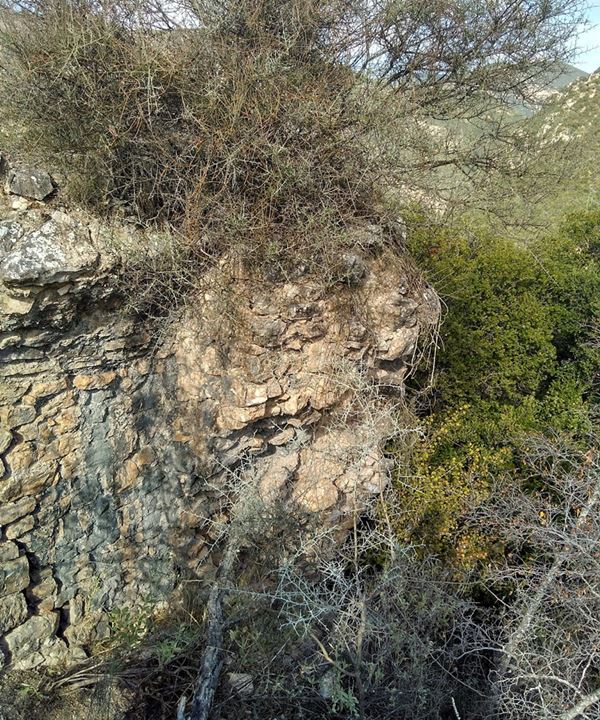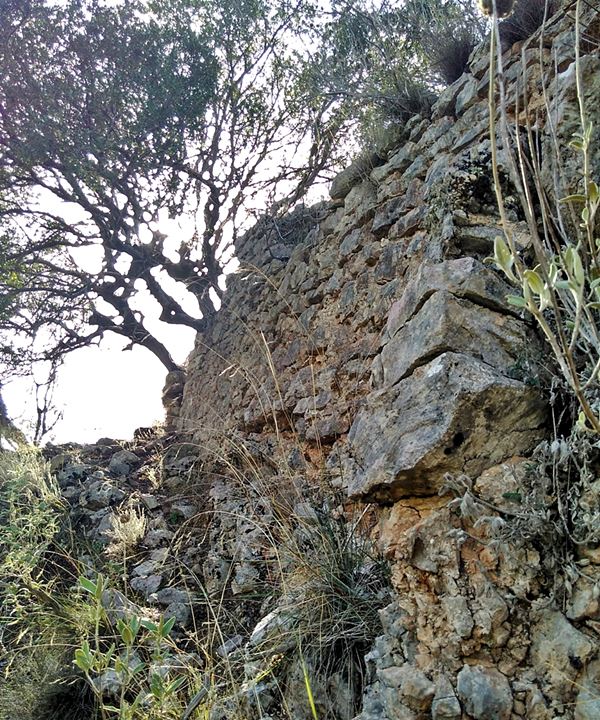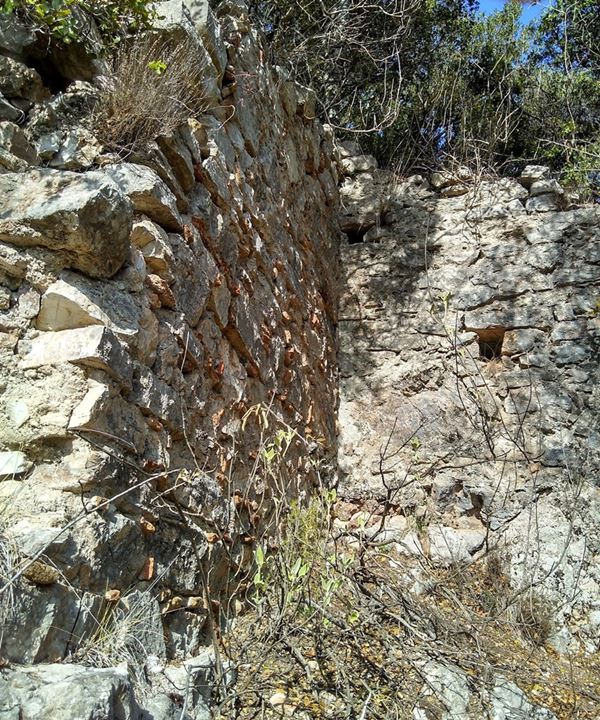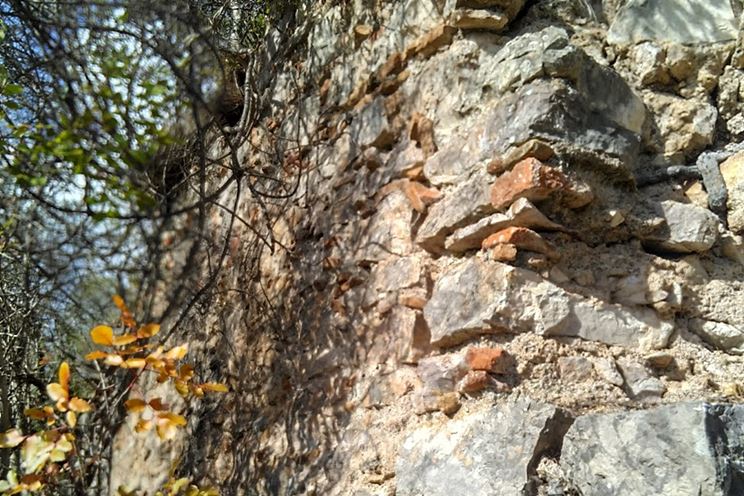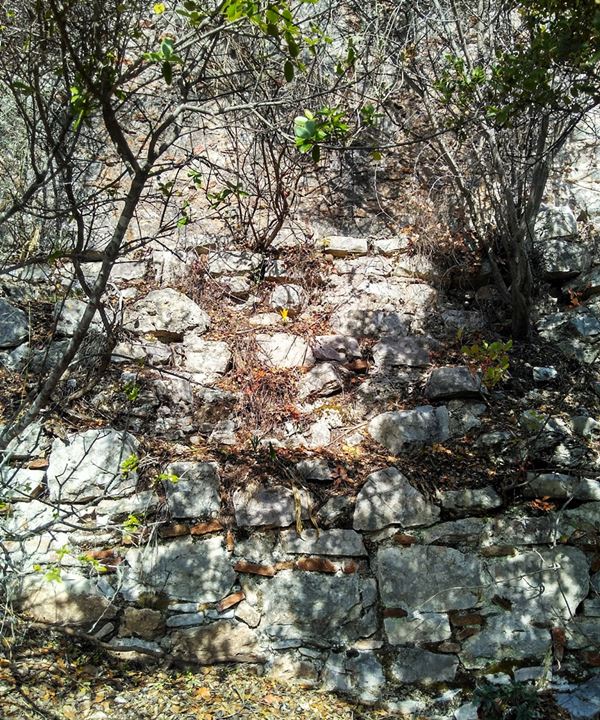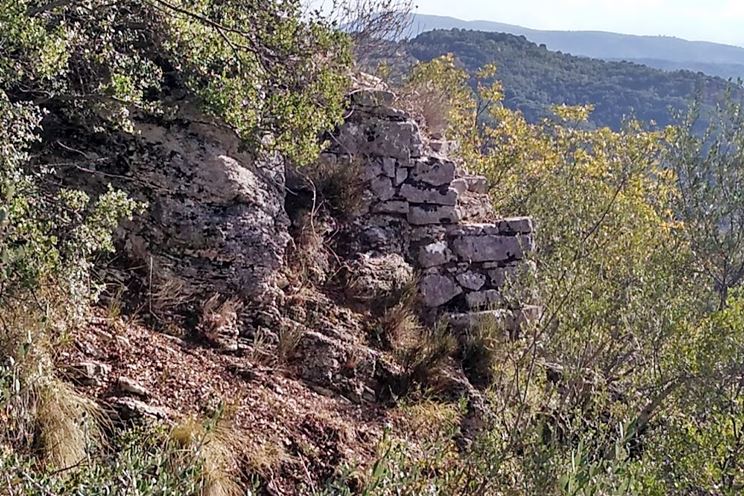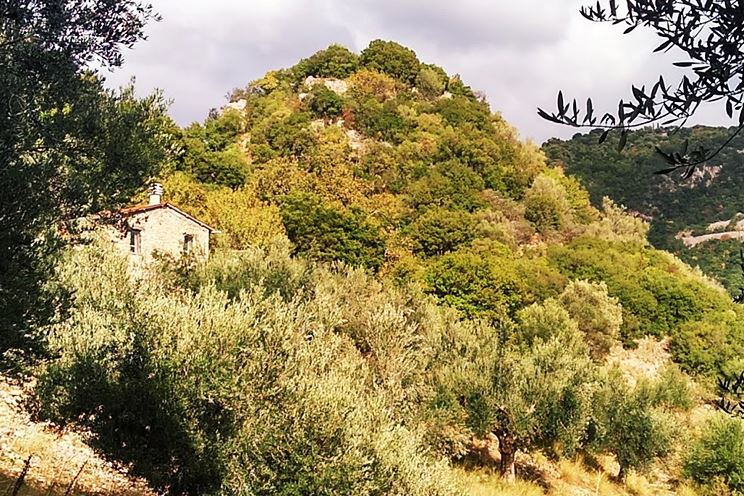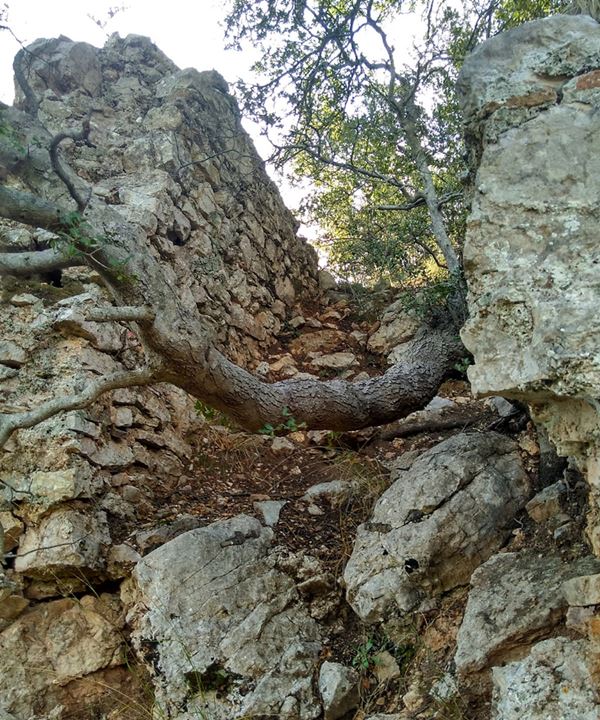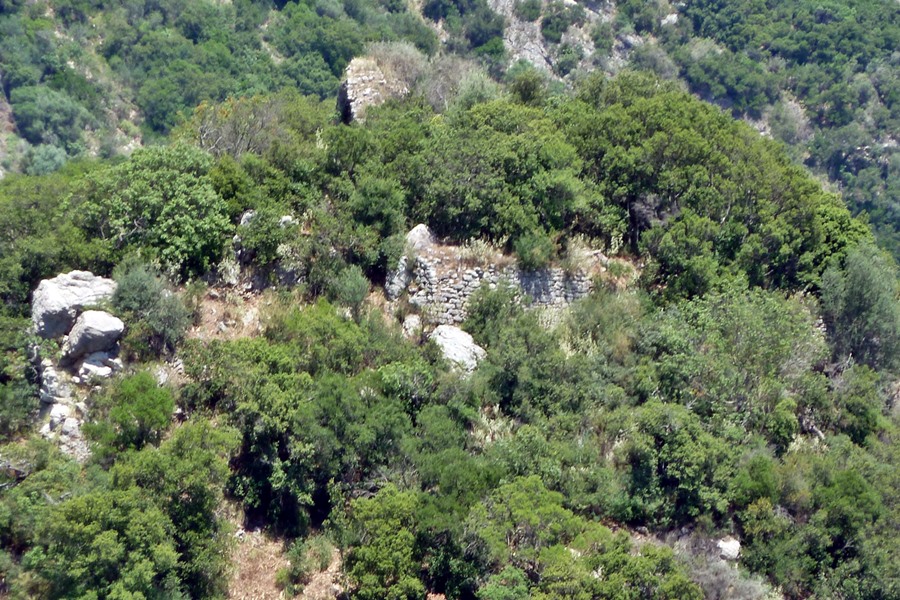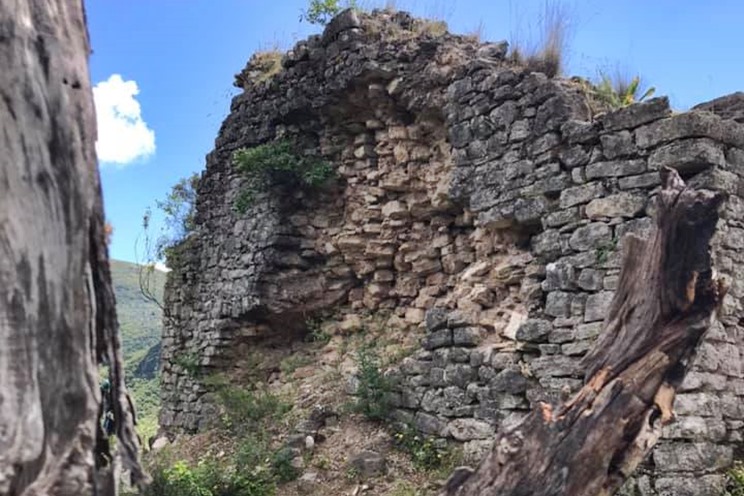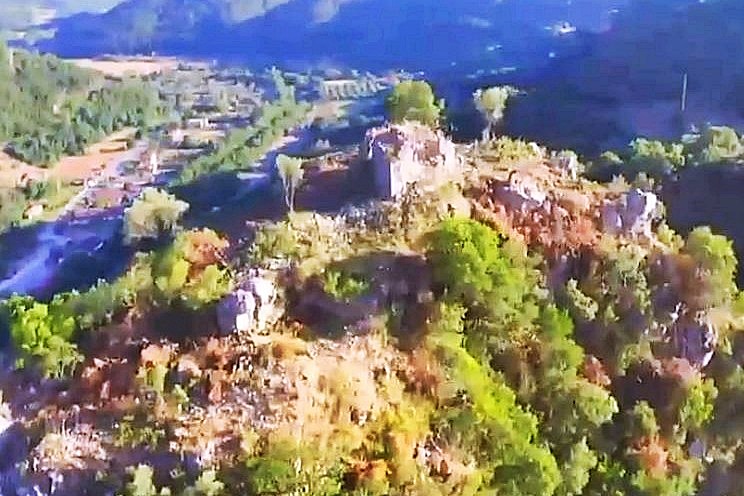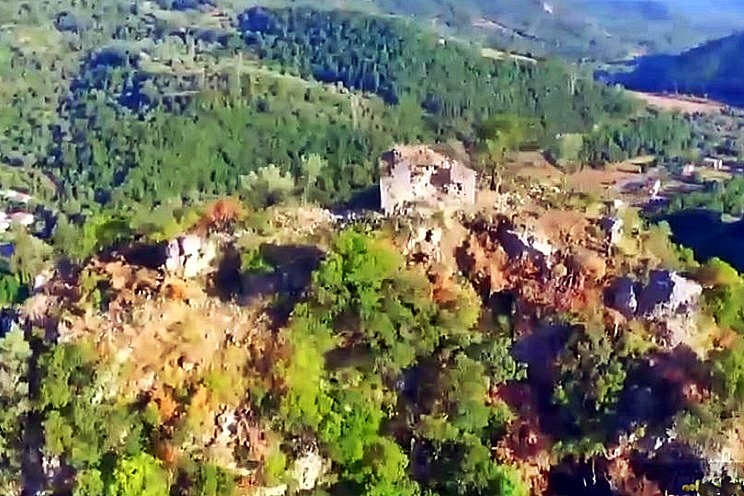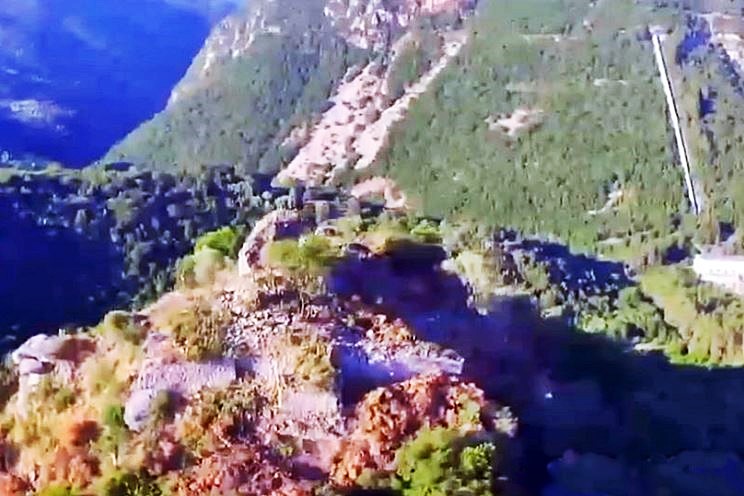Spatharis, Gortynia, Arcadia,Peloponnese
Castle of Roupeli
| Location: |
| On a hill above the Hydroelectric power station of Ladon river, between the villages Voutsis and Spatharis in Arcadia |
| Region > Prefecture: | 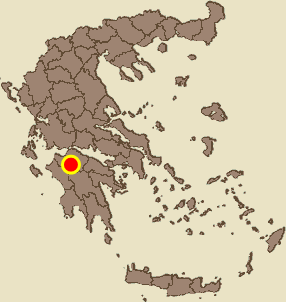 |
| Peloponnese Arcadia | |
| Municipality > Town: | |
| City of Gortynia • Spatharis | |
| Altitude: | |
|
Elevation ≈ 280 m (Relative Height≈110 m) |
| Time of Construction | Origin | |
| Early 14th century | FRANKISH |
|
| Castle Type | Condition | |
| Castle |
Rather Poor
|
A Frankish castle at the top of a conical hill at the western bank of Ladon river in Arcadia, opposite a hydroelectric station, between the villages Voutsis and Spatharis.
This has been most probably the Rumbalo or Roumbali or Roupeli castle, which is reported by medieval sources. “Roumbalo” is a word of Slavic origin meaning corn stalk or pine cone.
The alternative name that is used by some locals is Castle of Zoumbela that derives from the name of the mountainous region NW of the hill, which is also of Slavic origin and means bugs. The two names Zoumbela and Roumbalo seem to be non-related, but the phonetic resemblance might not be accidental.
History
The castle of Roupeli was a Frankish castle included in the list of fiefs among the castles of Arcadia. It is recorded as Rumbili or Rubeli (1463), Ruballo (1467, occupied by Turks) και Rubelli (1471, Venetian).
It is very close to the castle of Acova, 10km air-distance to the NW. Acova was important and the seat of one of the 12 original baronies of the Principality of Achaea.
The castle of Acova was acquired by the Byzantines of Mystras relatively early, in 1318. It is quite possible that the Franks built the castle of Roupeli after this event, in order to contain the appetite of the Byzantines for further advancement to the north, in Frankish territory. So probably the castle was built in the 14th century, soon after 1318.
In a panegyric in praise of emperor Manouil II, it is mentioned that a castle in lower Ladon river valley was sieged in 1417 by the Despot of Mystras Theodoros II Palaiologos and his brother and co-emperor Ioannis (later emperor Ioannis VIII). It is believed that the castle in that source was Roupeli. Antoine Bon (1969) agrees that this was the object of the siege of 1417 but does not make any connection with Roupeli or Rumballo.
The castle was captured by the Ottomans in 1458 after a short siege by the Sultan Mohamed V himself. The events of that seizure are narrated by the Byzantine historian Chalkokondylis with some gruesome details.
Structure, Fortification & Buildings
The castle occupies a plateau at the top of the hill measuring 30✖40 m. It consists of a big central tower, relatively isolated, and a wall which runs along all sides of the hill.
The dimensions of the tower are 7✖6 m and is preserved at a maximum height 3m. It is constructed of semi-processed irregular stones with mortar and fillings of stones but not brick fragments. In the interior, the roof of the ground floor looks arched and maybe here was installed a cistern.
The perimeter of the wall is 150 m with maximum height 2.5m. It is made of semi-processed stones with mortar and tile pieces between them.
At the eastern side there is a 1.5m opening of the walls. Obviously a gate. In the interior of the yard there are scattered ruins of buildings and remnants of round cisterns.
| First entry in Kastrologos: | May 2020 |
Sources
- Research, photographs and info by Sakis Lemonakis and his blog ΑΜΦΙΤΡΕΙΔΗΣ, 2019
- Antoine Bon, 1969, La Morée franque. Recherches historiques, topographiques et archéologiques sur la principauté d'Achaïe (1205-1430), Editions de Boccard, pp.401
- Μιχαήλ Σ. Κορδώσης, Συμβολή στην ιστορία και τοπογραφία της περιοχής Κορίνθου στους μέσους χρόνους, Αθήνα 1981, pag. 124, 130-131, 182, 258-259, 410 (διδακτορική διατριβή).
- Ιωάννης Θ. Σφηκόπουλος, Τα µεσαιωνικά κάστρα του Μορηά , Αθήνα,1968, page 247
- Facebook video by Σύλλογος Γορτυνίας ‘Ο Λάδωνας’
- ALBRIZZI, Girolamo, Esatta notitia del Peloponneso, volgarmente penisola della Morea, Venice, 1687, page 25
|
|
| Access |
|---|
| Approach to the monument: |
| From the bridge of the power station take the asphalt road to village Voutsis, After 2km turn right to difficult dirt road and continue on foot. At 400m there is a farm house. The hill is at NE. We reach after 20min difficult hike. |
| Entrance: |
| Free access |



